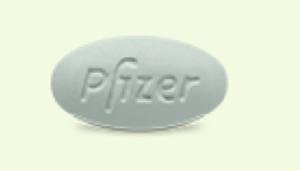Generic Ibrance Availability
Last updated on Sep 10, 2025.
Ibrance is a brand name of palbociclib, approved by the FDA in the following formulation(s):
IBRANCE (palbociclib - capsule;oral)
-
Manufacturer: PFIZER
Approval date: February 3, 2015
Strength(s): 75MG [RLD], 100MG [RLD], 125MG [RLD]
IBRANCE (palbociclib - tablet;oral)
-
Manufacturer: PFIZER
Approval date: November 1, 2019
Strength(s): 75MG [RLD], 100MG [RLD], 125MG [RLD]
Is there a generic version of Ibrance available?
No. There is currently no therapeutically equivalent version of Ibrance available in the United States.
Note: Fraudulent online pharmacies may attempt to sell an illegal generic version of Ibrance. These medications may be counterfeit and potentially unsafe. If you purchase medications online, be sure you are buying from a reputable and valid online pharmacy. Ask your health care provider for advice if you are unsure about the online purchase of any medication.
See also: Generic Drug FAQ.
Related patents
Patents are granted by the U.S. Patent and Trademark Office at any time during a drug's development and may include a wide range of claims.
-
Solid forms of a selective CDK4/6 inhibitor
Patent 10,723,730
Issued: July 28, 2020
Inventor(s): Chekal Brian Patrick & Ide Nathan D.
Assignee(s): Pfizer Inc.This invention relates to the crystalline free base of acetyl-8-cyclopentyl-5-methyl-2-(5-piperazin-1-yl-pyridin-2-ylamino)-8H-pyrido[2,3-d]pyrimidin-7-one, formula (1) having improved properties, to pharmaceutical compositions and dosage forms comprising the free base, and to methods for making and using such compounds, compositions and dosage forms in the treatment of cell proliferative diseases, such as cancer.
Patent expiration dates:
- February 8, 2034✓✓
- February 8, 2034
-
Solid dosage forms of palbociclib
Patent 11,065,250
Issued: July 20, 2021
Inventor(s): Ibrahim Fady Makram Louiz & Mullarney Matthew Patrick & Shanker Ravi M. & Spong Barbara Rodriguez & Wang Jian
Assignee(s): Pfizer Inc.The present invention relates to solid dosage forms of palbociclib comprising a water-soluble acid. The dosage forms described herein have desirable pharmacokinetic characteristics.
Patent expiration dates:
- August 19, 2036✓
- August 19, 2036
-
2-(pyridin-2-ylamino)-pyrido[2,3-D]pyrimidin-7-ones
Patent RE47739
Issued: November 26, 2019
Inventor(s): Barvian Mark & Booth Richard John & Quinn & III John & Repine Joseph Thomas & Sheehan Derek J. & Toogood Peter Lawrence & Vanderwel Scott Norman & Zhou Hairong
Assignee(s): Warner-Lambert Company LLCThe present invention provides substituted 2-aminopyridines useful in treating cell proliferative disorders. The novel compounds of the present invention are potent inhibitors of cyclin-dependent kinases 4 (cdk4)
Patent expiration dates:
- March 5, 2027✓✓
- March 5, 2027
More about Ibrance (palbociclib)
- Check interactions
- Compare alternatives
- Pricing & coupons
- Reviews (85)
- Drug images
- Side effects
- Dosage information
- Patient tips
- During pregnancy
- Support group
- FDA approval history
- Drug class: CDK 4/6 inhibitors
- Breastfeeding
- En español
Patient resources
Professional resources
Related treatment guides
Related/similar drugs
Glossary
| Term | Definition |
|---|---|
| Drug Patent | A drug patent is assigned by the U.S. Patent and Trademark Office and assigns exclusive legal right to the patent holder to protect the proprietary chemical formulation. The patent assigns exclusive legal right to the inventor or patent holder, and may include entities such as the drug brand name, trademark, product dosage form, ingredient formulation, or manufacturing process A patent usually expires 20 years from the date of filing, but can be variable based on many factors, including development of new formulations of the original chemical, and patent infringement litigation. |
| Drug Exclusivity | Exclusivity is the sole marketing rights granted by the FDA to a manufacturer upon the approval of a drug and may run simultaneously with a patent. Exclusivity periods can run from 180 days to seven years depending upon the circumstance of the exclusivity grant. |
| RLD | A Reference Listed Drug (RLD) is an approved drug product to which new generic versions are compared to show that they are bioequivalent. A drug company seeking approval to market a generic equivalent must refer to the Reference Listed Drug in its Abbreviated New Drug Application (ANDA). By designating a single reference listed drug as the standard to which all generic versions must be shown to be bioequivalent, FDA hopes to avoid possible significant variations among generic drugs and their brand name counterpart. |
Further information
Always consult your healthcare provider to ensure the information displayed on this page applies to your personal circumstances.

